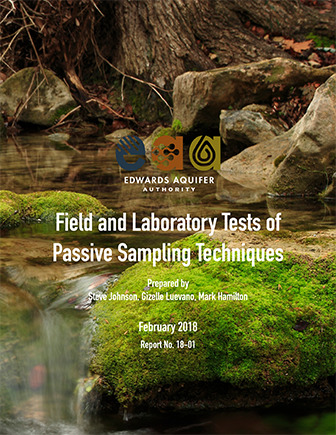|
Between 2007 and 2015, the Edwards Aquifer Authority (EAA) evaluated passive sampling devices for improving the collection of representative samples for its water quality monitoring program. Passive sampling techniques involve the placement of a passive sampling devices (PSD) in water over a prescribed time. While submerged, inorganic constituents and organic compounds diffuse through a porous membrane or sorb onto compatible media. PSDs are then recovered and analyzed for target analytes. Passive samplers offer the ability to monitor for selected analytes over a longer, continuous period compared to grab samples of water. Since PSDs concentrate sorbed compounds, they may indicate the presence of analytes that are not detectable by grab samples. Consequently, PSDs complement grab samples by offering detections at concentrations that are lower than the detection limits of compounds in the grab samples. The EAA aims to systematically evaluate passive sampling technologies to determine if PSDs may improve EAA’s water quality sampling program, especially with respect to detecting transient chemicals or the presence of chemicals below laboratory detection limits for compounds dissolved in water.
|

